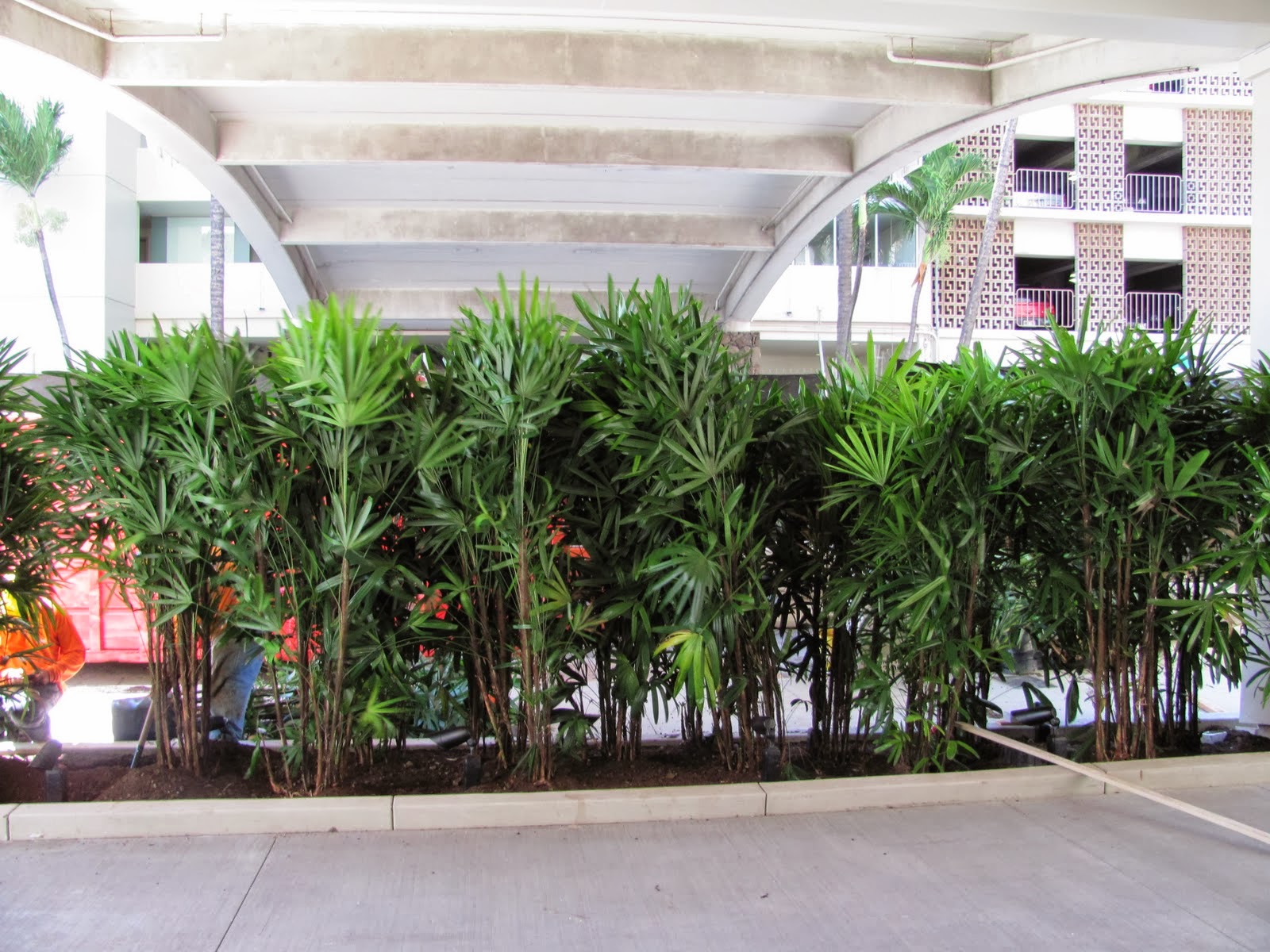Botanical Name: Rhapis excelsa
Common Name: Broadleaf Lady Palm
Family: Arecaceae
Type: Broad leaved deciduous shrub/palm tree
Origin/Habitat: Southern China and Taiwan.
Leaf Character: Glossy, palmate leaves divided into broad, ribbed segments. Leaf segments are single or few in young plants and increase to a dozen or more in mature plants; segments are divided to the petiole. Leaf-ends are sawtoothed unlike most other palms, occurring on slender petioles ranging from 20 to 60 cm in length.
Flower Type: small inflorescence at the top of the plant with spirally arranged, fleshy flowers containing three petals fused at the base.
Fruit: Ripe fruit are fleshy and white 1 to 3 inches
Exposure: Some shade, bright indirect light
Water: regular water
Remarks: It is not known in the wild; all known plants come from cultivated groups in China. They were first collected by the Japanese for Tokugawa shogunate palaces, then popularity spread to Europe, and later to America where its low light and humidity requirements make it a common feature in malls and offices. grows up to 4 m in height and 30 mm in diameter in multi stemmed clumps.
Management: Forms dense clumps of bamboo-like stalks topped with very dark green, broad, fan-shaped leaves Performing well in north-side foundation plantings or other shady locations, slow-growing lady palm is also ideal for containers. They lend a rich tropical look to the landscape. Lady palms can be effective accents in a shrub border or near an entryway. Plant on three- to four-foot centers to create a mass effect.
Management: Needs partial to deep shade and fertile organic soil to look its best but will tolerate the poor light, dust, and drought usual of indoor container culture. Be sure that drainage is adequate for indoor use.
Pest: Scale, palm aphids, sooty mold, and caterpillars,
Propagation: Spreading slowly by underground rhizomes & offshoots, is usually propagated by division









No comments:
Post a Comment